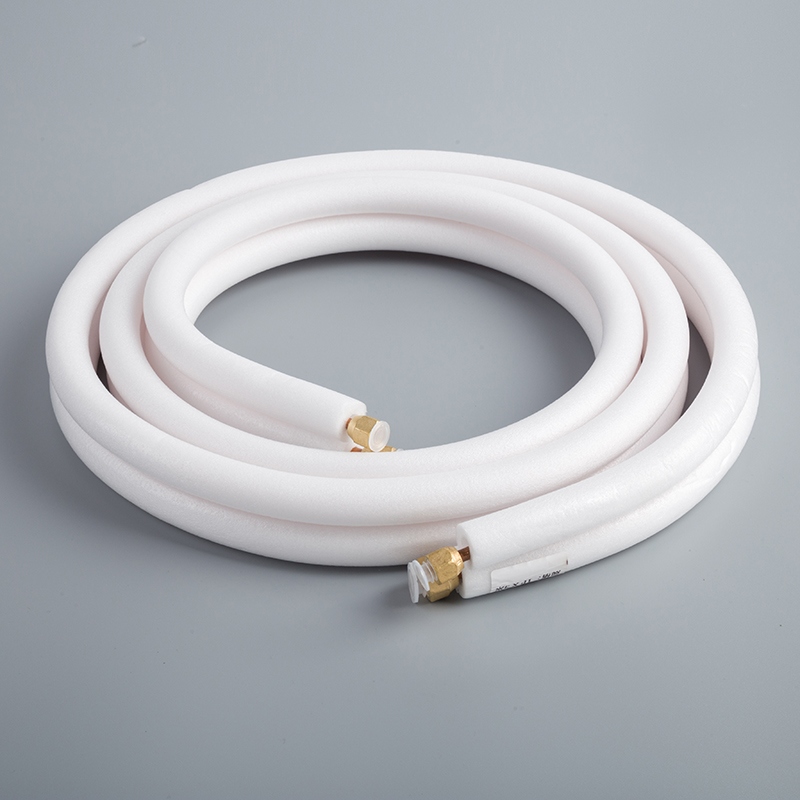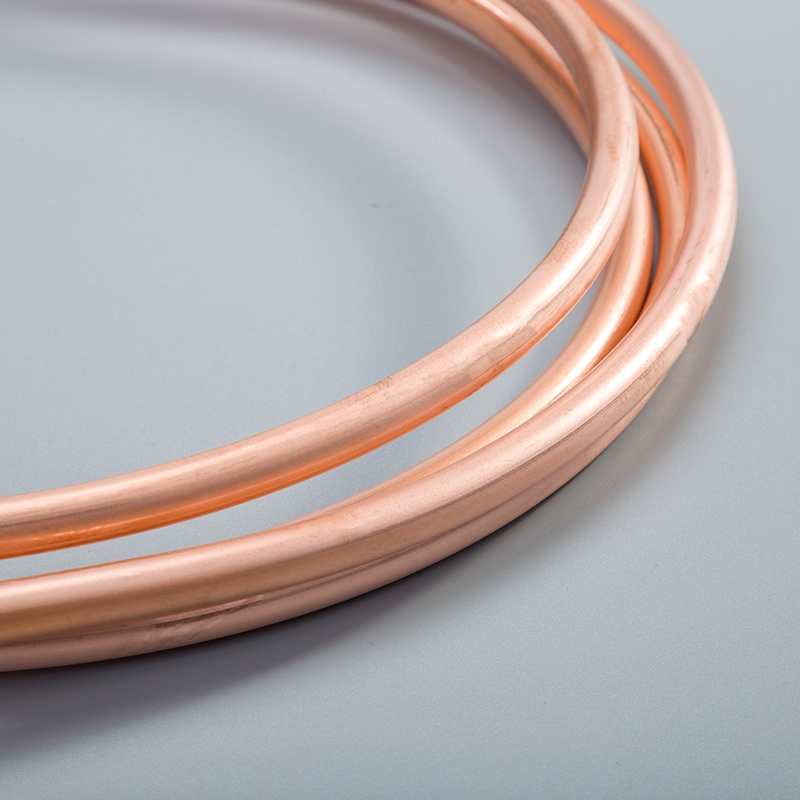Unveiling the Impact: Copper Tubing in Air Conditioning Systems
Copper tubing plays a vital role in air conditioning systems, excelling at efficiently transferring heat and withstanding the demands of refrigeration. Understanding its impact is crucial for maximizing efficiency, assessing how to analyze the environmental repercussions of copper tubing in air conditioning systems, and exploring future developments. The durability and anti-corrosive properties of copper tubes ensure longevity in air conditioners, making them a preferred choice for HVACR installations.
The Role of Copper Tubing

Efficiency and Durability
Anti-corrosive Properties
Copper tubing, known for its durability and corrosion resistance, is a crucial component in air conditioning systems. Its anti-corrosive properties ensure that the tubing can withstand harsh environmental conditions, maintaining its structural integrity over time. This resilience against corrosion contributes significantly to the longevity of air conditioners, reducing the need for frequent replacements and repairs.
Longevity of Air Conditioners
The longevity of air conditioners is directly linked to the quality and durability of the materials used in their construction. Copper tubing stands out as a reliable choice due to its ability to resist corrosion and degradation. By utilizing copper tubes in air conditioning systems, manufacturers can enhance the lifespan of the units, providing consumers with more efficient and long-lasting cooling solutions.
Installation and Maintenance
Refrigerant Lines
Refrigerant lines play a vital role in the functionality of air conditioning systems, facilitating the transfer of refrigerants between the indoor and outdoor units. Copper tubes are commonly employed for these lines due to their superior thermal conductivity and resistance to leaks. The use of copper tubing ensures efficient heat exchange during the cooling process, contributing to the overall performance of the air conditioner.
Power Consumption Reduction
Innovations such as α-HT devices integrated into copper pipes offer opportunities for reducing power consumption in air conditioning systems. By enhancing heat transfer efficiency within the tubing, these devices help optimize energy usage, leading to significant reductions in power consumption. This not only benefits users by lowering electricity bills but also aligns with sustainability efforts aimed at reducing energy waste in HVACR operations.
By leveraging the efficiency and durability of copper tubing in air conditioning systems, stakeholders can enhance performance while promoting environmental responsibility. The anti-corrosive properties of copper contribute to extended equipment lifespans, reducing maintenance costs and minimizing environmental impact through sustainable practices.
Expert Testimony:
Various Experts: "Copper pipes find extensive use in residential air-conditioning systems due to their durability, corrosion resistance, and efficient heat transfer properties."
Various Experts: "In spite of being used for thousands of years, copper is increasingly called as the ‘metal of the future’, especially in HVACR applications."
Through strategic selection and utilization of copper tubing components, HVACR professionals can achieve optimal system efficiency while prioritizing longevity and sustainability in air conditioning operations.
Environmental Impact
When considering the environmental impact of Copper tubing in Air Conditioning systems, it is essential to analyze how these components interact with nature. The Oxidation and Corrosion Resistance of copper tubing play a significant role in mitigating potential harm to the environment. Copper's natural ability to resist oxidation and corrosion ensures that air conditioning systems remain efficient over time, reducing the need for frequent replacements that could contribute to waste accumulation.
Moreover, conducting Environmental Assessments on the use of copper tubing allows experts to evaluate its overall impact on ecosystems and public health. By assessing factors such as material longevity and disposal methods, researchers can develop strategies to minimize environmental harm while maximizing the benefits of using copper in air conditioning systems. These assessments provide valuable insights into how sustainable practices can be integrated into HVACR operations for long-term environmental preservation.
Moving forward, addressing Contamination and Safety concerns related to copper tubing is crucial for ensuring both system efficiency and worker well-being. Implementing UVGI Installation techniques can help prevent microbial contamination within air conditioning systems, promoting cleaner indoor air quality and reducing health risks associated with poor ventilation. Additionally, establishing Safety Measures for Workers handling refrigeration systems is paramount to preventing accidents that could result from mishandling or improper maintenance practices.
Future Developments

Research and Innovations
Optimization of Capillary Tubes
Innovative research is focusing on optimizing capillary tubes in split-type air conditioning systems to enhance overall efficiency. By refining the design and dimensions of these tubes, experts aim to improve refrigerant flow control and distribution within the system. This optimization process involves evaluating various materials and configurations to identify the most effective solutions for maximizing cooling performance.
Environment-friendly Designs
The shift towards sustainable practices has spurred the development of environment-friendly designs for copper tubing in air conditioning systems. Manufacturers are exploring new alloys and coatings that reduce environmental impact while maintaining high performance standards. By incorporating eco-conscious materials and production processes, the industry is striving to create HVACR systems that align with modern sustainability goals.
Experimental Analysis
Thermal Performance
Experimental studies are underway to analyze the thermal performance of copper tubing in air conditioning applications. Researchers are conducting controlled experiments to measure heat transfer efficiency and temperature regulation capabilities. By collecting data on thermal conductivity and energy consumption, they can optimize system designs for improved operational effectiveness.
Local Air Temperature Studies
Local air temperature studies play a crucial role in assessing the impact of copper tubing on indoor climate control. Through comprehensive monitoring and analysis, experts can evaluate how different tubing configurations influence room temperatures and comfort levels. These studies provide valuable insights for designing HVAC systems that prioritize user comfort while minimizing energy consumption.
As advancements in research and experimentation continue to drive innovation in air conditioning technology, the future holds promising developments for enhancing system performance, sustainability, and user experience. By leveraging cutting-edge solutions and environmentally conscious practices, the industry is poised to deliver efficient cooling solutions that meet evolving consumer needs while reducing ecological footprint.
Copper tubing stands as a cornerstone in air conditioning systems, offering unparalleled efficiency and durability. Its anti-corrosive properties ensure prolonged equipment lifespans, reducing maintenance costs and environmental impact. The analysis of copper's environmental repercussions underscores the importance of sustainable practices in HVACR operations. Future research focusing on optimizing capillary tubes and developing eco-friendly designs will further enhance system performance and energy efficiency. By prioritizing longevity and innovation, the industry can continue to deliver cutting-edge solutions that align with modern sustainability goals.
See Also
Exploring the Effectiveness: Copper vs. Aluminum Tubing in HVAC
Revealing the Environmental Benefits of Dual Copper Tubing Coils
Revealing the Affordability of Dual Copper Tubing Coils
Revealing the Tomorrow: Copper Tubing Coils Technological Evolution
Simple Guide: Professional Installation of Copper HVAC Tubing


